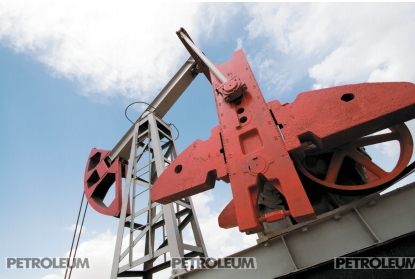Projects
In Search of New Rules of the Game
Artur Shakhnazaryan, AtyrauKazakhstan is reforming its subsurface resources legislation to make it consistent with international standards. This is especially important in today's world plagued by global instability, the global financial crisis and competition for investors. Last week, a task force creating a new fiscal system for subsurface resources management told what reforms it deems necessary at a conference for oil and gas lawyers held in Kazakhstan's oil capital Atyrau.
The task force was created by the National Chamber of Entrepreneurs of Kazakhstan in cooperation with the American Chamber of Commerce, KAZENERGY association and five major companies in the subsurface resources industry, such as Tengizchevroil, Karachaganak Petroleum Operating, North Caspian Operating Company, KazMunayGas and China National Petroleum Corporation.

The Fourth Lowest
According to Rustam Zhursunov, First Deputy Chairman of the National Chamber of Entrepreneurs (NPP), a lot of work has already been done during the last year, for example, reviewing the system of government regulation in the field of subsurface resources of a number of developed countries such as the United Kingdom, Norway, Brazil, the United States, Canada and Australia. Well-known international experts were invited to participate.
“After reviewing and analysing, for instance, the taxation system, we have come to the conclusion that we have the fourth lowest tax burden,” says Mr Zhursunov. “The average tax burden rate for second-model contracts (except Tengiz, Kashagan and Karachaganak) in Kazakhstan is 72-77% of earnings. Our tax burden is lower than in Norway and the UK, but higher than in Russia and Nigeria. Moreover, the absurdity of having three or four types of liability for the same offence has become obvious. It is not stimulating – it is punitive. It hinders the economic and financial activity in the main sector of Kazakhstan's economy, which accounts for 85% of GDP.”
Disappointing Forecast for 2030
Last year, KAZENERGY association conducted a thorough study of the industry and concluded that oil production in Kazakhstan has been falling, and sharply so (see “Forecasts of KAZENERGY,” Petroleum, issue #1-2015). If the trend continues, production will decline by approximately 15-20% by 2030. Today, most of the growth in production is driven solely by large contracts.
“Not a singe large deposit of subsurface resources has been discovered in Kazakhstan during the last twenty years, which is depressing. The geologist's rule of thumb says that growth in reserves should outpace production, and the minimum reserves-to-production ratio should be one. Kazakhstan has been breaking this ratio for twenty years, while in Soviet times it could be as high as 1.5,” says Rustam Zhursunov, referring to the official data.
Today, Kazakhstan produces 81 million tons of oil, of which roughly 40 million tons are produced by the “Big Three” and another 40 million tons by the rest of the oil industry.
“Twenty-three million tons were put on the balance sheet this year. That is, we need to come up with twenty million tons this year. Oil companies normally put aside at least 1.2 dollars per every barrel sold for exploration. With the risk factor of 25%, annual investments in exploration should be 800 million US dollars. This has not been the case for twenty years. And this is why this analytical study has been carried out. The main problems include no clear government policy on subsurface resources, limited high-quality geological data, not enough exploration undertaken by the government and the lack of mechanisms to attract private investment. The process of obtaining mineral rights is complex and cumbersome. It takes KazMunayGas eight months to sign a contract!” the NPP representative said.

How can we fix this?
What are the solutions proposed by the task force? Firstly, adopting a regularly updated government policy on subsurface resources, open access to geological data, implementing mechanisms to attract private investment in geological studies, flexible procedures for granting exploration rights, depending on the area's value.
The increase in reserves greatly depends on the amount of investment in exploration. The more geological data, the more investment in exploration. For areas with unclear investment potential, there has to be a simplified version of exploration, i.e. prospecting (preliminary exploration). The goal of the national subsurface research (NSR) is collecting geological data to classify resources by category D2-D1 (unproven and proven inferred reserves) and attracting private investment to NSR, perhaps to inferred reserves of category D1.
Dividing into Categories
The proposed policy on subsurface resources divides areas into two categories. The first one includes promising areas with inferred reserves, investment potential and information about them. Such promising areas are more attractive targets for private geological research, and only these areas will most likely be offered for competitive tendering.
The second category with unproven potential is divided into two sub-categories: little-studied areas and studied areas with unproven inferred reserves. Prospecting and exploration on a “first come – first served” basis should be used for little-studied areas. Private investors should be given access to subsurface research in combination with NSR in major projects, such as the stalling Eurasia project (see “Tough Times for Eurasia,” Petroleum, issue #2-2015).



